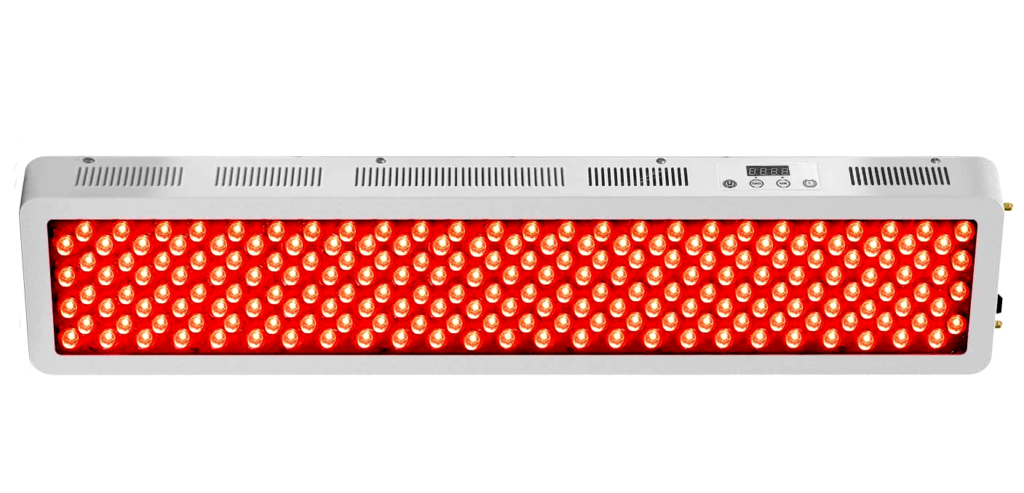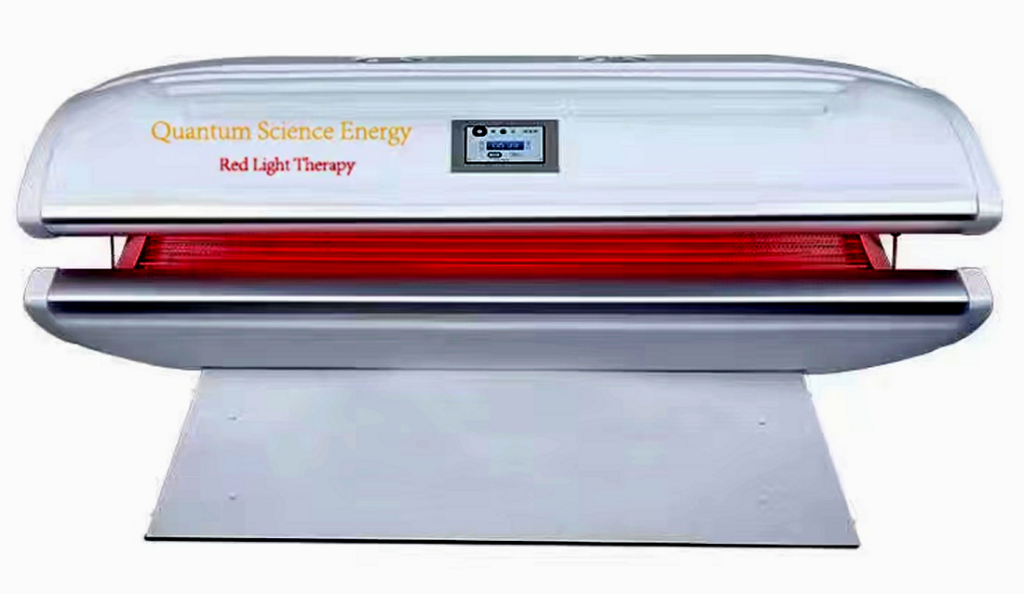Scientists and biohackers continue to uncover new health benefits of red light therapy devices, indicating their holistic and systemic effects. This therapy utilizes specific wavelengths of light, particularly red and near-red wavelengths ranging from 600 to 1100 nanometers, to trigger various reactions in our bodies.
When a red light therapy device is applied to the skin, it emits photons that interact with the mitochondria in our cells. This interaction stimulates increased energy production within the cells, leading to a wide range of positive processes throughout the body.
Let’s delve into the proven benefits of red light therapy and how it can enhance your daily life, helping you feel and live better.
A potent red light therapy device can optimize your body’s functions by:
-
- Enhancing circulation
- Reducing inflammation
- Providing pain relief
- Promoting tissue repair
- Improving performance
But let’s break down these benefits into specific everyday issues to address any doubts about the effectiveness of red light therapy. Here is a list of the incredible benefits it offers when administered at the appropriate dosage:
-
- Decreasing Blood Pressure: Red light therapy stimulates the release of nitric oxide, which dilates blood vessels, improves blood flow, and reduces blood pressure.
- Increasing Lymphatic System Activity: Red light therapy enhances the functioning of the lymphatic system, aiding in the distribution of white blood cells and the fight against infections.
- Enhanced Muscle Recovery & Performance: Red light therapy enables individuals to push their limits during workouts with reduced pain and faster recovery. By stimulating cellular energy production, it maximizes muscle performance and responsiveness, especially in areas rich in mitochondria like muscle tissue and the heart.
- Managing Asthma: Red light therapy activates the body’s anti-inflammatory defense mechanisms, helping to alleviate asthma symptoms.
- Improved Cognitive Function: Utilizing red light therapy in the morning can enhance mental clarity and sharpen cognitive abilities. Recent research suggests that red light exposure to the brain can improve memory and executive function, enabling individuals to perform challenging tasks more effortlessly. It also shows promise in potentially treating and preventing conditions like Alzheimer’s disease.
- Stress, Anxiety, and Depression Management: Red light therapy has gained attention as an alternative treatment for mental health issues, as many individuals prefer to avoid pharmaceuticals. Research indicates that shining red light on the head and brain cells may improve cognitive function, memory, and mood balance. In fact, a recent study showed significant remission of depression and anxiety symptoms in 74% of participants after 30 days of red light therapy.
- Regulating Fibromyalgia: Red and near-infrared light therapy can soothe the pain associated with fibromyalgia by increasing dopamine and serotonin levels, as well as providing pain relief.
- Alleviating Rheumatic Conditions: Red light therapy reduces inflammation and stimulates fibroblast proliferation, improving collagen production and enhancing the quality of bones, muscles, and tendons affected by rheumatic conditions.
- Assisting with Sinusitis: Red light therapy reduces inflammation and helps the immune system fight off germs, easing the symptoms of sinusitis.
- Easing Irritable Bowel Syndrome and Colitis: Red light therapy reduces inflammation and has a positive impact on gut bacteria, potentially alleviating the symptoms of irritable bowel syndrome and colitis.
- Supporting Muscle Sprains and Injuries: Red light therapy promotes healing by reducing pain, and hypersensitivity, and improving sensorimotor function, aiding in the recovery from muscle sprains and injuries.
- Natural Pain & Inflammation Relief: Red light therapy offers a non-pharmaceutical approach to alleviating pain and inflammation. It increases blood flow and boosts the body’s natural antioxidant defenses, effectively reducing chronic inflammation. This therapy aids in managing inflammation, promoting quicker and more efficient healing without the associated risks of pharmaceuticals.
- Accelerating Wound Healing: Red light therapy boosts collagen production and blood circulation, facilitating faster wound healing.
- Managing Carpal Tunnel Syndrome: Red light therapy shows promise in treating carpal tunnel syndrome by promoting nerve regeneration and providing pain relief.
- Weight Loss Support: Red light therapy contributes to weight loss by accelerating muscle recovery, stimulating metabolism, and reducing cellulite appearance. It activates mitochondria, which play a central role in weight management. Clinical trials have demonstrated that combining red light therapy with exercise is twice as effective in burning fat, making it a promising addition to weight-loss regimens.
- Skin Rejuvenation & Anti-Aging: Red light therapy is renowned for its skin benefits, commonly used in luxury spas. Clinical evidence supports its effectiveness in improving skin complexion, promoting collagen production, reducing inflammation, and enhancing blood flow. As a result, red light therapy can address various skin issues such as fine lines, wrinkles, sunspots, eczema, rosacea, and psoriasis.
- Combating Acne: Red light therapy kills acne-causing bacteria, reduces inflammation, repairs acne scars, and boosts the immune response, offering effective treatment for acne.
- Preventing and Treating Hair Loss: Red light therapy promotes blood flow and cell proliferation, making it a potential solution for preventing and treating hair loss.
- Building and Toning Muscles: Red light therapy accelerates muscle healing, allowing for more efficient muscle-building exercises and improved muscle tone.
- Testosterone Boost (for men): Red light therapy applied directly to the testes has been shown to increase the activity of Leydig cells responsible for testosterone production and fertility. Studies indicate that it enhances testosterone secretion and sexual satisfaction. The therapy activates dormant cells and increases ATP production, ultimately supporting hormone balance and function.
- Sleep Enhancement: Red light therapy mimics the soothing effects of the natural sunset, signaling the body to wind down and prepare for sleep. Clinical studies demonstrate that red light has beneficial effects on sleep quality and duration, promoting relaxation and counteracting the negative impact of blue light exposure. It can also stimulate the production of melatonin, the sleep hormone. Red light therapy, similar to the morning sun.


